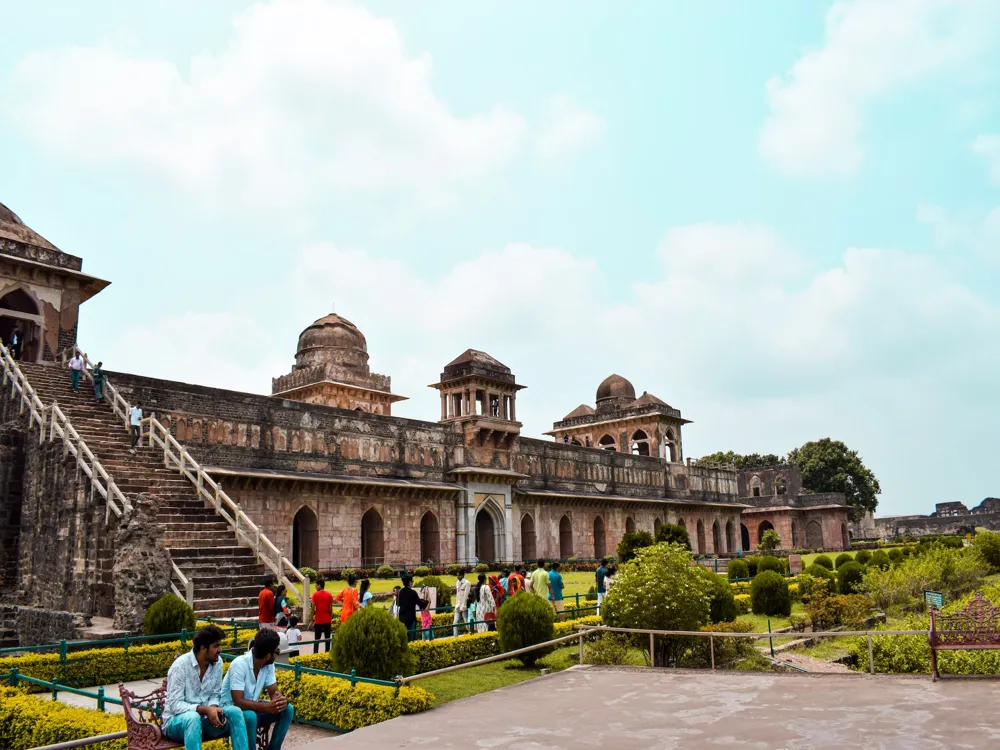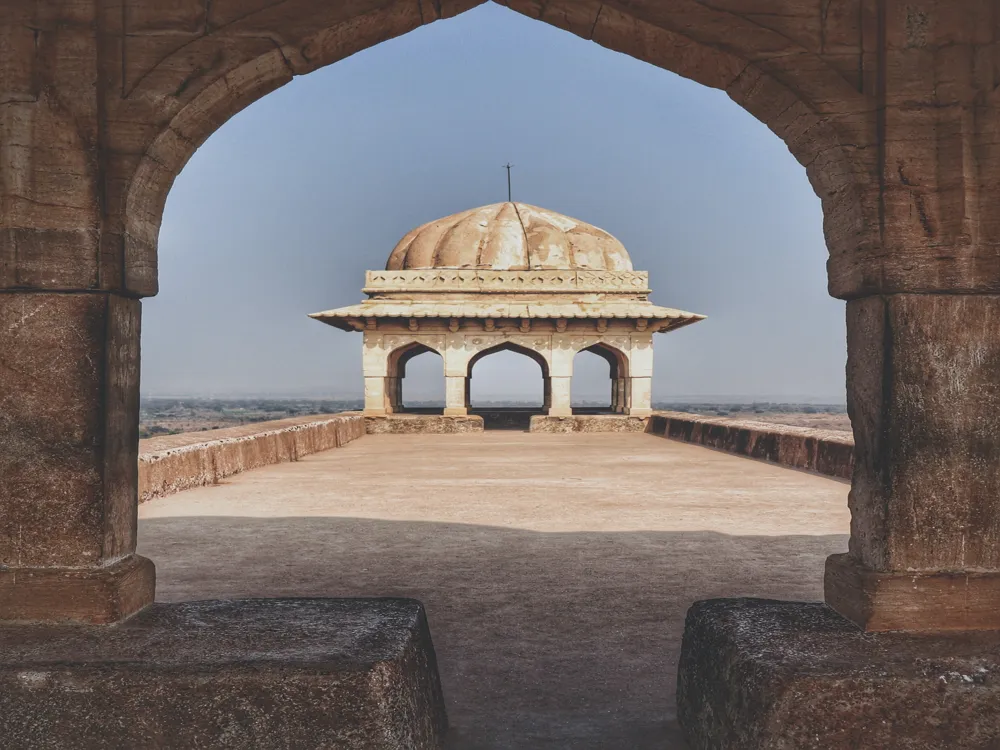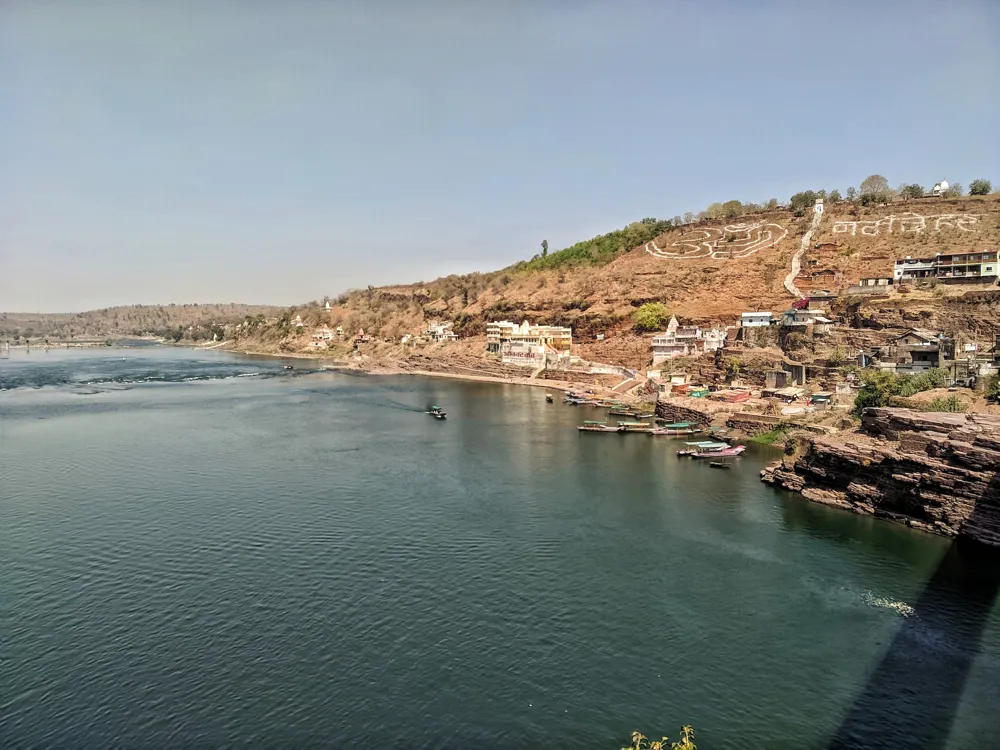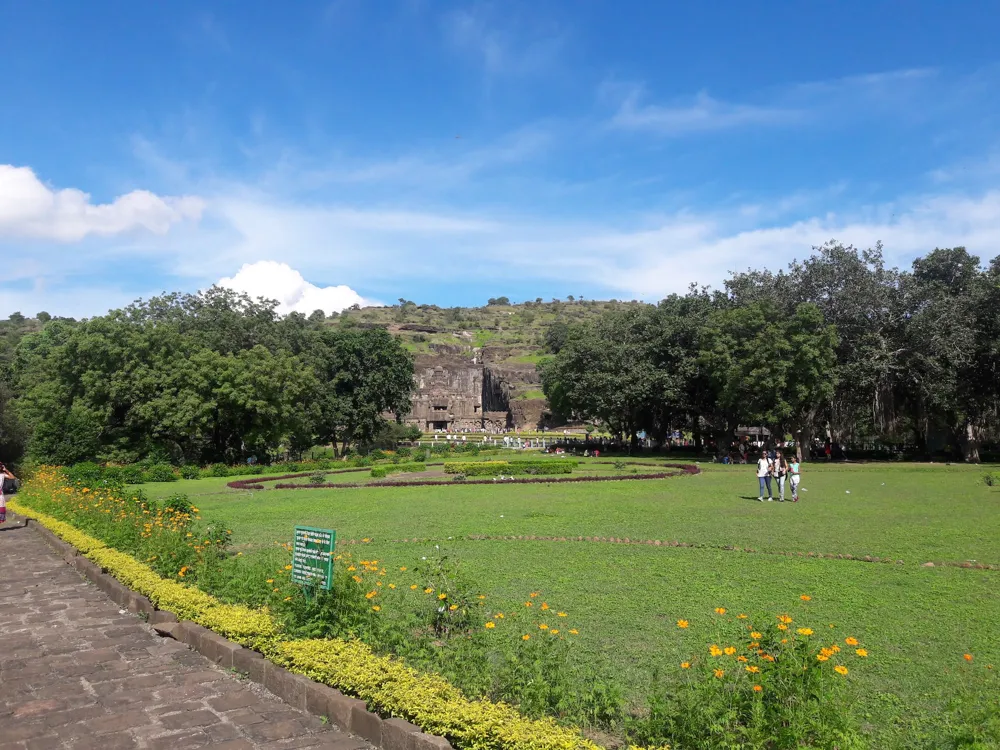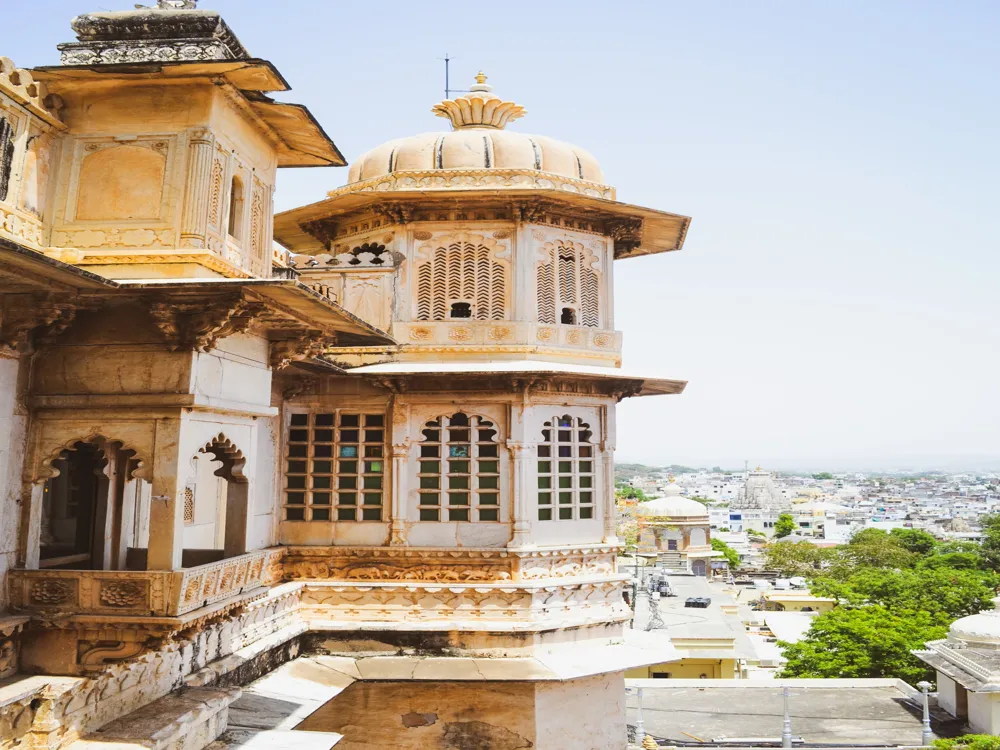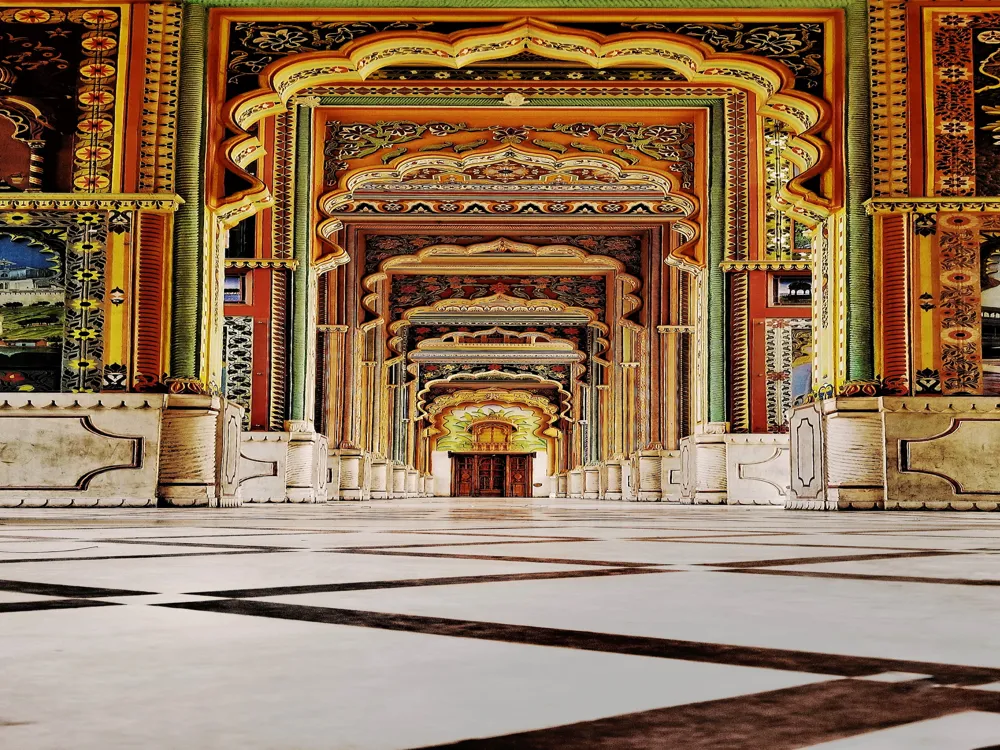Jaleshwar Temple, a remarkable example of spiritual and architectural splendor, is nestled in the quaint town of Maheshwar in Madhya Pradesh, India. This ancient temple, dedicated to Lord Shiva, stands as a testament to the rich cultural and historical heritage of the region. Maheshwar, located on the banks of the holy Narmada River, has been a major pilgrimage site for centuries, and Jaleshwar Temple plays a significant role in this spiritual journey. The temple's origins date back to the era when the Holkar dynasty ruled this land. Maheshwar served as the capital, and the Holkars were great patrons of art and culture, which is reflected in the town's architectural legacy. The Jaleshwar Temple, though not as colossal as some other temples in India, impresses with its intricate carvings and detailed sculptures that narrate stories from Hindu mythology. The serenity and spiritual ambiance of the temple offer a peaceful retreat for devotees and tourists alike. Surrounded by the ghats and the Narmada River, the Jaleshwar Temple provides a picturesque view, especially during sunrise and sunset. The temple is not just a place of worship but a beacon of the rich spiritual tradition that has been upheld in this region for centuries. The temple's annual festivals and rituals attract thousands of devotees who come to seek blessings and immerse themselves in its divine aura. The Jaleshwar Temple, with its deep-rooted spiritual significance and breathtaking architecture, is a jewel in the crown of Maheshwar and continues to be a beacon of faith and history. The Jaleshwar Temple of Maheshwar is an architectural marvel, showcasing the ingenuity and craftsmanship of ancient Indian artisans. This temple, dedicated to Lord Shiva, stands out for its unique design, intricate carvings, and spiritual ambiance. The architecture of the Jaleshwar Temple is a blend of Maratha, Mughal, and Rajput styles, indicative of the diverse cultural influences that have shaped the region's history. At the heart of the temple is the sanctum sanctorum, housing the sacred Jyotirlinga, which is believed to be a self-manifested representation of Lord Shiva. The lingam is enshrined in a small, dimly lit chamber, creating an atmosphere of mystique and reverence. The temple's shikhara (spire) is a striking feature, adorned with intricate carvings and motifs depicting scenes from Hindu mythology. The temple complex is built using locally sourced sandstone, which gives it a distinctive warm hue. The walls and pillars of the temple are decorated with elaborate carvings of deities, dancers, musicians, and floral motifs, showcasing the artistic excellence of the period. The temple's design also includes several open courtyards and halls, which were used for religious gatherings and cultural events. One of the most remarkable features of the Jaleshwar Temple is its acoustics. The temple's design ensures that sound resonates within its walls, creating a unique echo effect that enhances the spiritual experience. This acoustic feature is not just a marvel of ancient engineering but also serves a spiritual purpose, as it is believed that the resonating chants and hymns help in meditation and achieving a higher state of consciousness. The integration of astronomical elements into the temple's architecture is another fascinating aspect. The temple is strategically positioned so that during certain times of the year, the sun's rays directly illuminate the sanctum sanctorum, symbolizing the divine light of knowledge and enlightenment. This alignment showcases the advanced understanding of astronomy and its significance in temple architecture. In conclusion, the Jaleshwar Temple's architecture is a harmonious blend of spiritual significance, artistic expression, and scientific ingenuity. It stands as a proud testament to India's rich cultural heritage and continues to fascinate architects, historians, and spiritual seekers from around the world. Visitors to Jaleshwar Temple should dress modestly, in accordance with the temple's sanctity. Traditional Indian attire is preferred, but not mandatory. It is important to maintain a respectful demeanor within the temple premises, as it is a place of worship and spiritual significance. Photography may be restricted in certain areas of the temple. It is advisable to check with temple authorities for specific guidelines. When allowed, photography should be done without disturbing the sanctity and the devotees. The Jaleshwar Temple is open daily, but the timings may vary. Visitors should check the timings, especially during festivals and special events. Festivals like Mahashivratri are celebrated with great fervor, offering a unique cultural experience. Understanding and respecting local customs and traditions enrich the visit. Engaging with local guides or knowledgeable locals can provide deeper insights into the temple's history and rituals. There are several accommodation options near Jaleshwar Temple, ranging from budget stays to luxury hotels. Visitors should plan their stay in advance, especially during peak pilgrimage seasons. Basic facilities like restrooms and food stalls are available near the temple. Reaching Jaleshwar Temple in Maheshwar, Madhya Pradesh, is convenient as the town is well-connected by various modes of transportation. The nearest major city is Indore, approximately 91 kilometers away. From Indore, visitors can opt for buses, taxis, or private vehicles to reach Maheshwar. For those preferring to travel by air, the nearest airport is Devi Ahilyabai Holkar Airport in Indore. From the airport, one can hire a taxi or take a bus to Maheshwar. The journey offers scenic views of the Narmada River and the lush countryside. Train enthusiasts can reach Maheshwar via the nearest railway station in Barwaha, located about 39 kilometers away. Regular trains connect Barwaha to various major cities in India. From the railway station, local buses, taxis, and auto-rickshaws are available to take you to Maheshwar. For those who prefer a more adventurous route, road trips to Maheshwar are highly recommended. The roads are well-maintained, and the journey offers a chance to experience the beautiful landscapes of Madhya Pradesh. Whether you are traveling alone, with family, or in a group, reaching Jaleshwar Temple is a journey that is as rewarding as the destination itself. Read MoreOverview of Jaleshwar Temple, Maheshwar
Architecture of Jaleshwar Temple
Tips for Visiting Jaleshwar Temple
Dress Code and Conduct
Photography Guidelines
Timing and Festivals
Local Etiquette and Customs
Accommodation and Facilities
How To Reach Jaleshwar Temple
Maheshwar Tourism
Best Time to Visit Maheshwar
How to Reach Maheshwar
Things To Do Maheshwar
Jaleshwar Temple
Maheshwar
Madhya Pradesh
NaN onwards
View maheshwar Packages
Maheshwar Travel Packages
View All Packages For Maheshwar
Top Hotel Collections for Maheshwar

Private Pool

Luxury Hotels

5-Star Hotels

Pet Friendly
Top Hotels Near Maheshwar
Other Top Ranking Places In Maheshwar
View All Places To Visit In maheshwar
View maheshwar Packages
Maheshwar Travel Packages
View All Packages For Maheshwar
Top Hotel Collections for Maheshwar

Private Pool

Luxury Hotels

5-Star Hotels

Pet Friendly









